INTRODUCTION
‘Where’s the nearest carrier?‘ . This is a question associated with the US President, who is said to rely on the US Navy’s fleet of nuclear-powered supercarriers to respond to any military crisis that America would face. But would you associate the same question with the Russian president? Ummm, no. We could imagine Putin say ‘Where’s the nearest tug?‘ [‘Где ближайший буксира’]. This is because the Russian Navy’s carrier was pretty much a joke, spending most of its time at port, undergoing refits, repairs and deploying once in a while, belching black smoke, with a handful of fighter jets and a tugboat as its escort.

However, the jokes are all set to end, maybe for good, as Russia has sent its revamped carrier, the Admiral Kuznetsov on its first overseas combat deployment. This is not to be confused with the usual deployments of Kuznetsov to the Mediterranean as they were all peacetime ones and the aircraft were not sent on any combat mission whatsoever. But now, Kuznetsov is ready to carry out air patrols and strike missions in support of the Syrian and Russian forces embroiled in the war over there.
BIRTH OF A ‘ HEAVY AVIATION CRUISER’
Admiral Flota Sovetskogo Soyuza Kuznetsov [Адмирал флота Советского Союза Кузнецов] (“Admiral of the Fleet of the Soviet Union Kuznetsov”), as she is officially designated, was launched in 1985 in Nikolayev South Shipyard, in the erstwhile Soviet Union. It was supposed to be the first of a new class of Soviet 65,000 ton ‘Heavy Aviation Cruisers’ designed to provide air cover for the Soviet Navy battle groups and offensive firepower against hostile carriers.
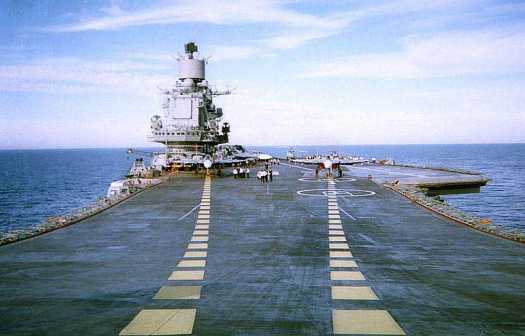
It was commissioned in 1990 when the Soviet Union was in its twilight years. The collapse of the Soviet Union delayed the operationalization of the carrier to 1995, which was when the Russian Navy was putting its fleet back together. A second carrier of the same class called the Varyag remained incomplete, was later sold to China and now serves as the Chinese carrier Liaoning after a decade-long refit.
ELECTRONICS AND ARMAMENT
The Kuznetsov was built with a formidable electronics and weapons suite, which allow it to operate alone if needed. However, much of it has stayed the same since 1990 and is in need of a major upgrade. The current configuration is sufficient for self-defense and monitoring during its present deployment as it won’t be facing any missile or aircraft threats.
The electronics suite consists of
- 1 x 4 faced Passive Electronically Scanned Array (PESA) radar for air/surface search
- 1 x Planar array radar for air/surface search
- 3 x Navigation radars
- 4 x Fire control radars for SA-N-9 surface to air missiles
- 1 x Hull mounted sonar
The defensive weapons suite consists of
- 24 x 8 cells for the SA-N-9 surface to air missile for a total of 192 missiles . 15 km range with command guidance.
- 8 x Kashtan gun-missile air defense systems with 256 missiles
- 2 x RPK-5 anti-submarine rocket launchers with 60 rockets

It is clear that the Admiral Kuznetsov is well equipped in the sensor department, but has a ridiculous number of short-range air defense missiles. This makes it fully dependent on its air wing and escorts for long range air defense.
CARRIER BATTLE GROUP
The Kuznetsov won’t be alone on its maiden combat deployment. It will be the flagship of a battle group, which will have 2 of the most powerful warships of the Russian Navy, the nuclear-powered cruiser Pyotr Veliky and the carrier itself, along with a collection of assorted vessels.
The carrier battle group will consist of the following ships
- Heavy aviation cruiser Admiral Kuznetsov [Адмирал Кузнецов]
- Nuclear-powered cruiser Pyotr Veliky [Пётр Великий]
- Udaloy class Anti-Submarine destroyer Severomorsk [Североморск]
- Udaloy class Anti-Submarine destroyer Vice-Admiral Kukalov [Вице-адмирал Кулаков]
- Ocean-going tugboat Nikolay Chiker [Николай чикер]
- Replenishment ship Sergei Osipov [Сергей Осипов]
- Kilo-class diesel-electric submarine Stary Oskol [Старый Оскол]
- A nuclear submarine, possibly a Sierra, is sure to be lurking underwater as an escort.
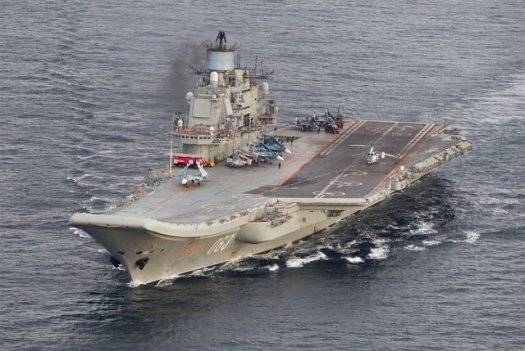
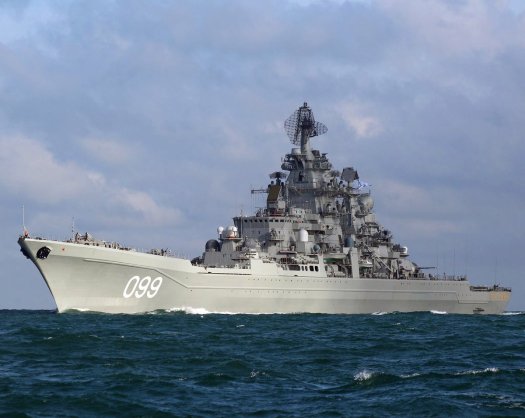
Pyotr Veliky in all its glory

Vice-Admiral Kukalov
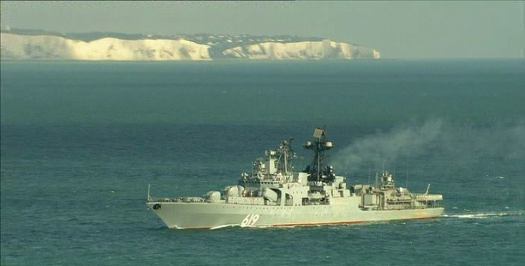
Severomorsk
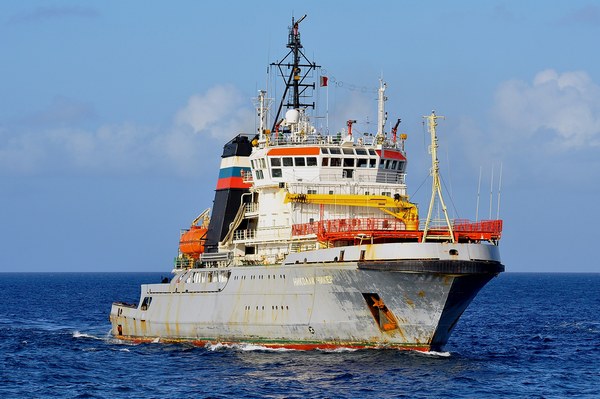

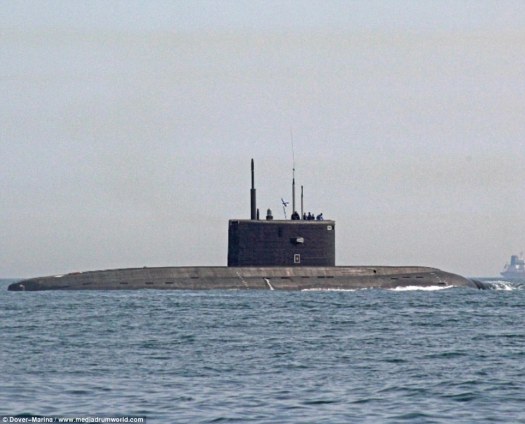
The Kilo class submarine, Stary Oskol
Related Content
FIXED AND ROTARY AIR WING
The air wing for the present deployment in the Mediterranean consists of
- Su-33K long range fighters
- MiG-29K multi-role fighters
- Ka-52K attack helicopters
- Ka-27 anti-submarine helicopters
- Ka-31 airborne early warning helicopters

Each of these aircraft has been embarked on board with a particular role in mind. Russia is expected to use this opportunity to try out each of these platforms in combat as none of them have ever been deployed in a war zone. It will be interesting to see how they use the Ka-52K helicopters embarked on board. They were originally destined for the Mistral-class helicopter carriers which were to be purchased from France but denied at the last moment due to the Ukraine crisis. Lacking any other flattop, Russia is compelled to deploy them from its aircraft carrier itself. Here are some of the roles which the aircraft are expected to do.
Su-33K : Known for its long range and large payload, the naval flanker will primarily serve the fleet air defense role. It will be used for escorting, harassing, and keeping a close eye on ‘friendly’ American spy planes and fighters who will be performing ‘routine’ patrols in the region. Since some of these flankers have been upgraded, I wouldn’t be surprised if they tried their hand at bombing as well.


MiG-29K : Revived from near extinction by India’s interest in this multirole carrier-borne fighter, the MiG-29K is the Russian Navy’s newest toy. Being a small plane, a larger number of planes can be accommodated on board when compared to the larger Su-33K. The Mig can carry a variety of air to surface precision-guided bombs and missiles to perform strike missions over Syria.

Ka-52K : This is the first time that Russia has deployed a dedicated attack helicopter on a carrier. Armed with short-range missiles, rockets, 30 mm cannon and medium range anti-ship missiles, these helos could police the surroundings of the carrier and handle asymmetric threats easily. All I hope is that they won’t claim to have sent them for ‘humanitarian’ purposes. It is entirely possible that they will see shore deployments, operating with the Kuznetsov as a mobile base.
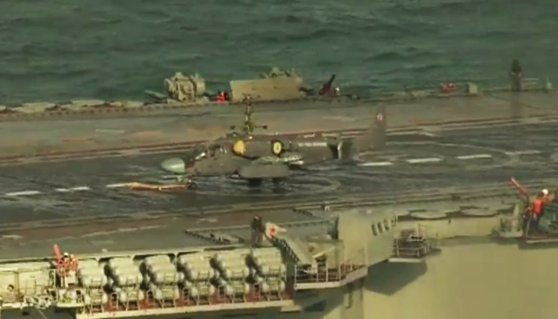

Ka-27 : This Kamov serves many roles primarily anti-submarine warfare, followed by search and rescue, plane guard and transport. Several of these helicopters are carried on board. Their chin mounted radar allows them to monitor surface threats and their dipping sonar will be used to keep an eye on curious submarines. There would be plenty of ‘Hide ‘n seek’ going on between these helos and ‘curious’ USN submarines.

Ka-31 : Since Russia lacks a fixed wing airborne early warning platform like the E-2 Hawkeye, they are dependent on the Ka-31 helicopter based AEW system. It has a foldable planar array radar, which rotates for 360 coverage. The biggest drawback is that the data has to be downloaded to the carrier for processing when compared to the onboard processing abilities of the E2. The Ka-31 also has a small endurance, but that is easily countered by carrying multiple helicopters and deploying them in succession. The biggest advantage of using them would be that the Kuznetsov can turn it’s radars off and maintain radio silence, while still getting the radar picture of the surroundings.
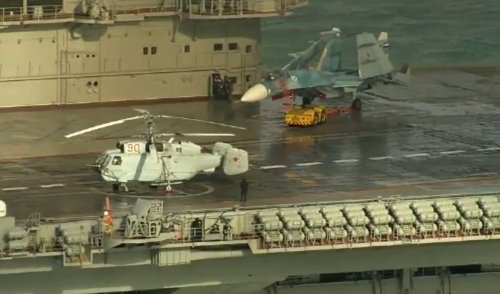

JOURNEY TO THE MEDITERRANEAN

Starting out in the Arctic region, the journey from Severomorsk to Syria was a long one. It sailed around Norway through the North Sea, passed within 100 km of London while sailing through the English Channel. It received a warm welcome from the Royal Navy who sent a Type-45 destroyer (the Kuznetsov’s main competitor in engine breakdowns) and a Type 23 frigate to escort it. Then it passed by the French, Spanish and Portuguese coasts before entering the narrow Strait of Gibraltar and into the Mediterranean. It is presently in the Mediterranean Sea, on the way to Syria.

There was a lot of publicity from Russian, European and American media houses as it is not often that anyone gets to sight a Russian carrier battle group heading for war. Also, there was a tweetstorm happening on Twitter, where both the Russian and British militaries were trolled. Have a look at some of them.
BREAKING: UK teams ready their maritime patrol aircraft as Russian ships sail near Dover pic.twitter.com/7eUAnrtgmv
— Mark (@rawlimark) October 21, 2016
Most important ship in #Russia‘s flotilla crossing the channel now: Salvage Tug Nikolay Chiker.
(Needed to tow aircraft carrier #Kuznetsov) pic.twitter.com/kJKEjlPk0a— Thomas C. Theiner (@noclador) October 21, 2016
#Kuznetsov RAS stocks being prepared pic.twitter.com/13RnSrKKDs
— Plans Bloke (@Colne_Magna) October 21, 2016
Russian ship spotting. Test your skills. pic.twitter.com/9E8o0DAob5
— Blogs of War (@BlogsofWar) October 22, 2016
Latest photo of #Kuznetsov passing through the English Channel. pic.twitter.com/rg5abv2dSX
— David Bober (@mrdavidboberesq) October 21, 2016
All I can say is, Twitter is ruthless. Whether you are an American, British, Russian, French, Indian or Chinese, you won’t be spared. Nowadays, the militaries of Russia, Britain and the US are giving plenty of ammunition to the Twitter army by botching up things.
PERFORMANCE LIMITATIONS
Being a conventional carrier with a ski-jump to launch its aircraft, there will be a lot of obstacles during a long-term combat deployment. Let us look at how it stacks up against the French and American carriers which are operating in the same region.
SORTIE RATE
- It’s tiny air wing will allow 10-15 sorties per day at maximum capacity.
- This is a far cry from the 150+ daily sorties that the US Navy Nimitz class carriers can unleash.
- Even the French carrier with its complement of Rafale-M can do over 50 sorties per day.
- So the air wing of Su-33k and Mig-29K won’t be able to participate in any sustained bombing or combat air patrol (CAP) missions.
- The carrier could theoretically carry out 1 x CAP sortie per Su-33K and 1 x Strike sortie per Mig-29K, for a total of less than 15 per day.

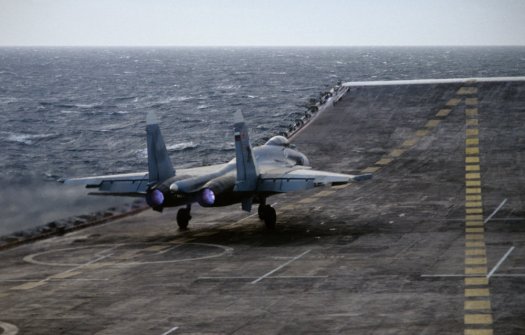
Related content
COMBAT RADIUS
- The ski-jump configuration will not permit take-off with a heavy combat load.
- This won’t be a hindrance for CAP as the Su-33K can take off with 6-8 air-air missiles.
- But it will limit the carriage of heavy air to ground weapons, which the Mig-29K would need for strike missions.
- The MiG-29K’s ability to carry buddy refueling pods and refuel other aircraft mid-air will allow the CBG to greatly extend its combat radius.
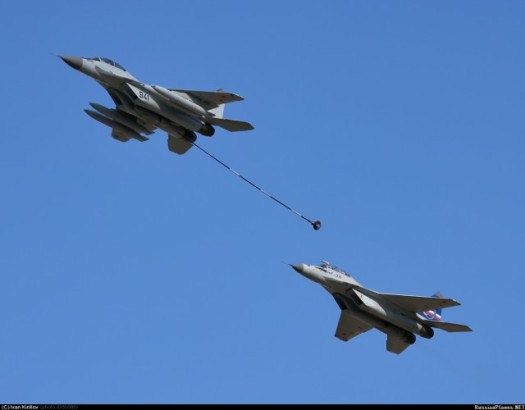
$$$$₽₽₽₽
- Dollars/Roubles play the biggest role in this conflict. Economy decides how a country will fight a war and how long they can sustain it.
- With Russia under sanctions and having economic problems, their budget won’t support continued expenditure of expensive weaponry. Meanwhile, France and the US have been able to expend copious amounts of expensive bombs and missiles over their choice of targets.
- This is one of the major reasons why Russia has used plain old gravity bombs for most of its involvement in Syria. They have them in stock by the hundred thousand and they are cheap.
- Continuous flights and precision bombing missions will be expensive . Russia is likely to use their carrier for only a show of strength, with all serious ops being conducted by their air force from Hmeimim base in Syria.
CONCLUSION
As you might have already guessed, this deployment is more of a show of strength and defiance rather than practical utility. Basically, the whole fleet (except the submarine) is can be considered vintage, as they are from the Soviet era. It actually feels as if the Soviet Union is going to battle in Syria as the Russian Navy’s modernization plans for its surface fleet haven’t taken off well, with lack of funds being their achilles heel. Though the ships in the battle group are numerous, they do not have a fraction of the power projection capabilities of a US Navy battle group.
Russia badly wants to change this by introducing advanced warships such as the Admiral Gorshkov class frigates with excellent land attack and air defense capabilities, but they aren’t able to build as many as they want, as quickly as they need. They still have to depend on the tiny Buyan-M missile boats to launch land attack cruise missiles as none of the enourmous ships in this battle group can do so! This deployment will however serve as a learning experience for them, and we can expect similar such deployments in the future, with the oldies being progressively replaced by modern and more capable warships if things go according to their plans.
I would like to thank my friend #Epslilon of BattleMachines for helping me with the fleet upates. Now let us finish off with a popular meme that will bring a smile to your face

If you enjoyed reading this article, do rate it below!


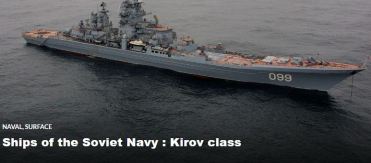


Hehehe, prolly your drollest post ever, NRP. Immensely enjoyable. Thank you.
A query please on the Kamov series of choppers. I’m assuming that the commonality between the three here and our own 22 is that they are coaxial and have twin GTs (Please correct me). Question: once our production line is made in HAL, will we be able to spin-off hybrid Kamovs based on our varied needs, including heavy-duty variants?
Cheers!
LikeLiked by 1 person
Thanks NRP for an excellent article. I have a question for you. Can Admiral Kuznetsov be termed as an Aircraft Carrier or is it a cruiser? My doubt is because there has been numerous rumors that during the refit, Admiral Kuznetsov has been converted to a carrier like INS Vikramaditya. Further will the main airborne asset be SU-33 or MIG-29 as there has been reports that Russia will progressively be replacing SU-33 with MIG-29. Further, I heard that they have plans for the next generation of carriers under the Project 23000E Shtorm which they have also offered to India for INS Vishal. In your opinion, will this project ever become a reality keeping in mind the fact that Russia has never made such a huge carrier. Veering slightly from the subject, in your opinion will India opt for the Russian design or will India go with USA for INS Vishal? Would be highly honored if you could answer this question.
LikeLiked by 1 person
Hey Manojambat,
certainly most would agree that Kuznetsov obviously is an aircraft carrier. Yet for a carrier it is equipped with a remarkable conventional fire power, so the Russians can claim it to be something else than an aircraft carrier. The bottom line is that the Russian intentionally termed it as an aircraft carrying cruiser, to be able to send it through the Bosphorus without violating the Montreux Convention, which addresses traffic through that strait and generally prohibits the transit for aircraft carriers.
https://en.wikipedia.org/wiki/Montreux_Convention_Regarding_the_Regime_of_the_Straits
LikeLike
Hey Manojambat,
certainly most would agree that Kuznetsov obviously is an aircraft carrier. Yet for a carrier it is equipped with a remarkable conventional fire power, so the Russians can claim it to be something else than an aircraft carrier. The bottom line is that the Russian intentionally termed it as an aircraft carrying cruiser, to be able to send it through the Bosphorus without violating the Montreux Convention, which addresses traffic through that strait and generally prohibits the transit for aircraft carriers.
https://en.wikipedia.org/wiki/Montreux_Convention_Regarding_the_Regime_of_the_Straits
LikeLike
Hi, excellent article! I was wondering if you could extrapolate on the capacity (or incapacity) of the biggest surface combatants in the CBG of launching land attack cruise missiles. You state that only the Buyan-M missile boats have this ability. Are you saying that Pyotr Velikiy cannot perform this task? and if so why?
Thank you
LikeLiked by 1 person
Hi. Thank you 🙂
Pyotr Veliky is a soviet era warship which was built with long range anti ship missiles and surface to air missiles. Land attack capability wasn’t included in the soviet doctrine of Naval warfare using surface combatants. Hence none of them have that capability.
This is changing with the modern conflicts and requirements. That’s why the other Kirov, Nakhimov, is being fitted with 80 cells for land attack cruise missiles! Pyotr Veliky too will get this upgrade in the future.
LikeLike
My favorite article yet!
LikeLiked by 1 person
Another fine article with excellent information and analysis N.R.P. The wait was worth it.
And of course that last image. 🙂
LikeLike
Very nice article…where can i download all the photos you put in here?!? there very nice…
LikeLike
Thank you. You can download the photos by right clicking and saving them.
LikeLike